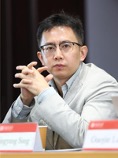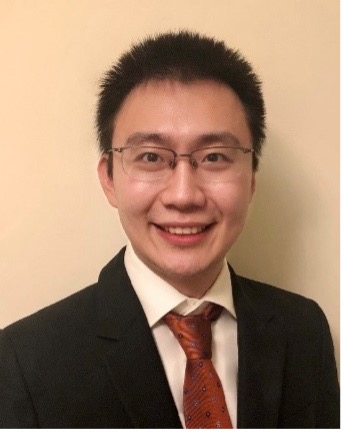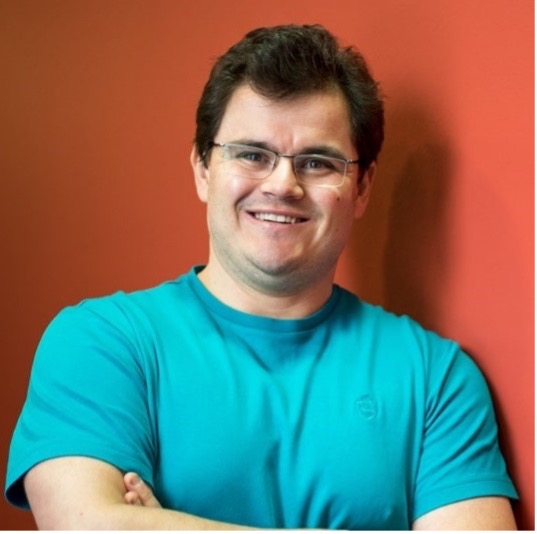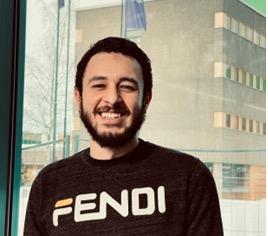Tutorials
T1 - Machine Learning Over-the-Air: Two Tales of Interference
Speakers:

Howard H. Yang
Zhejiang University, China

Tony Q. S. Quek
Singapore University of Technology and Design, Singapore
Summary
This tutorial aims to present the current research efforts on the development of implementing machine learning algorithms in wireless systems. Specifically, we provide a comprehensive coverage of a distributed learning paradigm based on over-the-air computing, including the general architecture, model training algorithm, and an analytical framework that quantifies the convergence rate. The analysis takes into account key effects from wireless transmissions such as channel fading and interference on the convergence performance of distributed learning and demonstrates how interference is detrimental to model training. Next, we present several improvements to the framework from different aspects. Particularly, we introduce model pruning schemes that reduce the computation, as well as communication complexity for distributed learning over the air. We also discuss the system enhancements from an algorithmic perspective, e.g., the momentum-based approach, to accelerate the model training. Finally, we will elaborate on the analysis of the generalization error of the statistical models trained over the air, which shows that wireless interference has its positive potential of improving the generalization capability. We conclude by shedding light on future works.
Biography
Howard H. Yang received a Ph.D. degree in Electrical Engineering from the Singapore University of Technology and Design, Singapore, in 2017. Currently, he is an assistant professor with the ZJU-UIUC Institute, Haining, China. His background also features appointments at the University of Texas at Austin and Princeton University. He is currently an Editor for IEEE Transactions on Wireless Communications. His research interests cover various aspects of wireless communications, networking, and signal processing.
Tony Q. S. Quek received the B.E. and M.E. degrees in Electrical and Electronics Engineering from the Tokyo Institute of Technology, Tokyo, Japan, respectively. At the Massachusetts Institute of Technology (MIT), Cambridge, MA, he earned the Ph.D. in Electrical Engineering and Computer Science. Currently, he is a tenured Professor with the Singapore University of Technology and Design (SUTD). He is also the Director of the Future Communications R&D Programme, the Head of ISTD Pillar, and the Deputy Director of the SUTD-ZJU IDEA, the 2020 Nokia Visiting Professor, and from 2016 to 2020, the Clarivate Analytics Highly Cited Researcher. His current research topics include wireless communications and networking, security, big data processing, network intelligence, and IoT. He is an IEEE Fellow.
T2 - Holographic Radio: A New Paradigm for Ultra-Massive MIMO
Speaker:

Boya Di
Peking University, China

Hongliang Zhang
Princeton University, USA

Lingyang Song
Peking University, China
Summary
To enable a ubiquitous intelligent information network, ultra-massive multiple-input multiple-output (MIMO) technology is perceived to enhance the network capacity significantly by exploiting the spatial diversity. However, existing massive MIMO techniques highly rely on phased arrays, which require numerous phase shifters and power amplifiers to construct complex phase-shifting circuits for accurate beamforming. This makes the implementation of ultra-massive MIMO in practice become prohibitive from both cost and power consumption perspectives. The recently developed reconfigurable holographic surfaces (RHSs) composing of densely packing sub-wavelength metamaterial elements can achieve accurate beam steering without costly hardware components. Specifically, the feeds of the RHS are embedded in the bottom layer of the RHS to generate the incident electromagnetic waves, enabling an ultra-thin structure. The RHS utilizes the metamaterial radiation elements to construct a holographic pattern based on the holographic interference principle, which gives rise to the holographic beamforming technique. Benefitted from the advantages of compact design, low power consumption and low cost, RHS realizes continuous or quasi-continuous apertures to enable holographic communications. In this tutorial, we will first provide a basic introduction of RHSs. We then introduce the unique features of RHSs which enable ultra-massive MIMO for both communication and sensing, in a comprehensive way. Related design, analysis, optimization, and signal processing techniques will be presented. Typical RHS-based applications for both wireless communications and radio-frequency sensing will be explored. The implementation issues along with our developed prototypes and experiments will also be discussed. Formalized analysis of several up-to-date challenges and technical details on system design will be provided for different applications.
Biography
Boya Di obtained her Ph.D. degree from the Department of Electronics, Peking University, China, in 2019. Prior to that, she received the B.S. degree in electronic engineering from Peking University in 2014. She was a postdoc researcher at Imperial College London and is now an assistant professor at Peking University. Her current research interests include holographic radio, reconfigurable intelligent surfaces, multi-agent systems, edge computing, and aerial access networks. She received the best doctoral thesis award from China Education Society of Electronics in 2019. She is also the recipient of 2021 IEEE ComSoc Asia-Pacific Outstanding Paper Award and 2020 IEEE N2WOMEN Rising Star Award. She serves as an associate editor for IEEE Transactions on Vehicular Technology since June 2020. She has also served as a workshop co-chair for IEEE WCNC 2020&2021.
Hongliang Zhang received the B.S. and Ph.D. degrees at the School of Electrical Engineering and Computer Science at Peking University, in 2014 and 2019, respectively. He was a Postdoctoral Fellow in the Electrical and Computer Engineering Department at the University of Houston, Texas. Currently, he is a Postdoctoral Associate in the Department of Electrical and Computer Engineering at Princeton University, New Jersey. His current research interest includes reconfigurable intelligent surfaces, aerial access networks, optimization theory, and game theory. He received the best doctoral thesis award from Chinese Institute of Electronics in 2019. He is an exemplary reviewer for IEEE Transactions on Communications in 2020. He is also the recipient of 2021 IEEE Comsoc Heinrich Hertz Award for Best Communications Letters and 2021 IEEE ComSoc Asia-Pacific Outstanding Paper Award. He has served as a TPC Member for many IEEE conferences, such as Globecom, ICC, and WCNC. He is currently an Editor for IEEE Communications Letters, IET Communications, and Frontiers in Signal Processing. He has also served as a Guest Editor for several journals, such as IEEE Internet of Things Journal, Journal of Communications and Networks, etc.
Lingyang Song rreceived his Ph.D. degree from the University of York, UK, in 2007, where he received the K. M. Stott Prize for excellent research. He worked as a research fellow at the University of Oslo, Norway until rejoining Philips Research UK in March 2008. In May 2009, he joined the School of Electronics Engineering and Computer Science, Peking University, and is now a Boya Distinguished Professor. His main research interests include wireless communications, mobile computing, and machine learning. Dr. Song is the co-author of many awards, including IEEE Leonard G. Abraham Prize in 2016, IEEE ICC 2014, IEEE ICC 2015, IEEE Globecom 2014, and the best demo award in the ACM Mobihoc 2015. He received National Science Fund for Distinguished Young Scholars in 2017, First Prize in Nature Science Award of Ministry of Education of China in 2017. Dr. Song has served as a IEEE ComSoc Distinguished Lecturer (2015-2018), an Area Editor of IEEE Transactions on Vehicular Technology (2019-), Co-chair of IEEE Communications Society Asia Pacific Board Technical Affairs Committee (2020-). He is a Clarivate Analytics Highly Cited Researcher. He is an IEEE Fellow.
T3 - Simultaneously Transmitting And Reflecting Surface (STARS) for 360° Coverage towards 6G
Speakers:

Yuanwei Liu
Queen Mary University of London, UK

Xidong Mu
Queen Mary University of London, UK
Summary
Reconfigurable intelligent surfaces (RISs) and their diverse variants have emerged as promising techniques for the sixth-generation (6G) wireless networks. Comprising of a large number of low-cost reconfigurable elements, both the phase and even the amplitude of the incident signals can be beneficially adjusted, thus realizing the Smart Radio Environment. The main content of this tutorial is to introduce the novel concept of simultaneously transmitting and reflecting surfaces (STARS). The wireless signal incident upon STARs is divided into transmitted and reflected signals passing into both sides of the space surrounding the surface, thus facilitating a 360° coverage. First, the key differences between conventional reflecting-only RISs and STARS are identified from the perspectives of hardware design, physics principles, and communication system design. Furthermore, the basic signal model of STAR-RISs is introduced, and three practical protocols are proposed for their operation, namely energy splitting, mode switching, and time switching. Based on the proposed protocols, a range of promising application scenarios are put forward for integrating STARS into next-generation wireless networks. Case studies are provided for revealing the superiority of STAR-RISs over other baselines. Finally, several open research problems are discussed.
Biography
Yuanwei Liu received the B.S. and M.S. degrees from the Beijing University of Posts and Telecommunications in 2011 and 2014, respectively, and the PhD degree in electrical engineering from the Queen Mary University of London, U.K., in 2016. He was with the Department of Informatics, King‘s College London, from 2016 to 2017, where he was a Post-Doctoral Research Fellow. He has been a Senior Lecturer (Associate Professor) with the School of Electronic Engineering and Computer Science, Queen Mary University of London, since Aug. 2021, where he was a Lecturer (Assistant Professor) from 2017 to 2021. His research interests include non-orthogonal multiple access, 5G/6G networks, RIS, integrated sensing and communications, and machine learning. He is a Web of Science Highly Cited Researcher 2021. He is currently a Senior Editor of IEEE Communications Letters, an Editor of the IEEE Transactions on Wireless Communications and the IEEE Transactions on Communications. He serves as the leading Guest Editor for IEEE JSAC special issue on Next Generation Multiple Access, a Guest Editor for IEEE Network special issue on Next Generation Multiple Access for 6G, and a Guest Editor for IEEE JSTSP special issue on Signal Processing Advances for Non-Orthogonal Multiple Access in Next Generation Wireless Networks. He received IEEE ComSoc Outstanding Young Researcher Award for EMEA in 2020. He received the 2020 IEEE Signal Processing and Computing for Communications (SPCC) Technical Early Achievement Award, IEEE Communication Theory Technical Committee (CTTC) 2021 Early Achievement Award. He received IEEE ComSoc Young Professional Outstanding Nominee Award in 2021. He has served as the Publicity Co-Chair for VTC 2019-Fall. He is the leading contributor for “Best Readings for Non-Orthogonal Multiple Access (NOMA)” and the primary contributor for “Best Readings for Reconfigurable Intelligent Surfaces (RIS)”. He serves as the founding Academic Chair of the IEEE ComSoc Next Generation Multiple Access (NGMA) Emerging Technology Initiative (NGMA-ETI), the chair of Special Interest Group (SIG) in SPCC Technical Committee on the topic of signal processing Techniques for NGMA, the vice-chair of SIG Wireless Communications Technical Committee (WTC) on the topic of Reconfigurable Intelligent Surfaces for Smart Radio Environments (RISE), and the Tutorials and Invited Presentations Officer for Reconfigurable Intelligent Surfaces Emerging Technology Initiative.
Xidong Mu rreceived the Ph.D. degree in Information and Communication Engineering from the Beijing University of Posts and Telecommunications (BUPT), Beijing, China, in 2022. He is currently a Postdoctoral Researcher with the School of Electronic Engineering and Computer Science, Queen Mary University of London, U.K. His research interests include non-orthogonal multiple access, IRSs/RISs aided communications, integrated sensing and communications, and optimization theory. He received the Exemplary Reviewer Certificate of the IEEE Transactions on Communications in 2020. He serves the Conference Symposium and Workshop Officer for IEEE ComSoc Next Generation Multiple Access Emerging Technology Initiative (NGMA-ETI).
T4 - Machine Learning Approaches for Machine Type Communication Scenarios towards 6G
Speakers:

Mohammad Shehab
University of Oulu, Finland

Hirley Alves
University of Oulu, Finland

Eslam Eldeeb
University of Oulu, Finland
Summary
Introduced in 5G, Machine-type Communication (MTC) has revolutionized the wireless communications industry by shifting the focus towards the Internet of Things (IoT), and its variants such as the Industrial IoT. Towards the massive deployment of devices in 6G with novel use cases, conventional Mathematical tools are turning out to be incapable of solving large scale network optimization problems, with large number of variables and non-linear parameters. In this context, machine learning is overwhelmingly becoming an essential tool in handling large scale and high complexity wireless communication scenarios, that lack mathematical tractability. At the heart of these scenarios lies the MTC with problems such as energy optimization, traffic characterization, massive access, mobility, and dependability. In this tutorial, we introduce key research directions in MTC towards 6G and the role of machine learning in addressing some of them. Moreover, we present case studies related to non-orthogonal multiple access (NOMA), unmanned aerial vehicles (UAVs) trajectory planning for serving massive MTC networks, MTC traffic modelling and predictive resource allocation. The tutorial will depict how to apply different ML tools such as support vector machines, deep reinforcement learning (DRL), Q-learning, long-short term memory (LSTM), and meta learning in the former cases studies. In summary, this tutorial provides knowledge to interested researchers about suitable machine learning tools to solve different up-to-date problems in MTC and paves the way for applying these tools in these scenarios and other communication problems.
Biography
Mohammad Shehab is a postdoctoral Researcher at University of Oulu, Finland. He obtained his B. Sc from Alexandria University in 2011. He worked as TA at Alexandria University and the Arab Academy in Egypt from 2012-2015. He obtained two M. Sc degrees from the Arab Academy and University of Oulu in 2014 and 2017, respectively. He obtained his doctoral degree in 2022 from Oulu with focus on energy efficient QoS provisioning in IoT. His work so far resulted in 13 conference papers, 8 journal papers, and 1 patent. Mohammad won the best student paper award in ISWCS 2017, and the Nokia foundation award consecutively for 2018 and 2019. His current research directions include ML, UAVs, and efficient resource allocation.
Hirley Alves is Associate Professor and is Head of the Machine-type Wireless Communications Group. He is actively working on massive connectivity and ultra-reliable low latency communications for future wireless networks, 5GB and 6G, full-duplex communications, energy-efficient, and sustainable ICT. He leads the Massive Wireless Automation for the 6G Flagship Program. He is a recipient of several national and international grants and awards. He has been the organizer, chair, TPC, and tutorial lecturer for several renowned international conferences. He is the general chair of the biannual workshop series on Full-Duplex Communications for Future Wireless Networks at ICC and Globecom and led a series of tutorials on the same topic, besides being the lead lecturer in MTC-related tutorials (ISWCS’18, PIMRC’19, INDIN’19, ICPS’19, ICPS’20). In addition, he was the General Chair of the ISWCS’2019 and the General Co-Chair of the 1st 6G Summit, Levi 2019, and ISWCS 2021. Moreover, Prof. Alves is co-author of a book entitled “Wireless RF Energy Transfer in the massive IoT era: towards sustainable zero-energy networks,” Wiley, Dec 2021.
Eslam Eldeeb received the B.Sc. degree in electrical engineering from Alexandria University, Egypt, in 2019, and the M.Sc. degree from the University of Oulu, Finland, in 2021, where he is currently pursuing the Ph.D. degree with the Centre for Wireless Communication. He is actively working on massive connectivity and ultrareliable low-latency communication. His research interests are machine-type communication, deep learning, and deep reinforcement learning for wireless communication networks.
